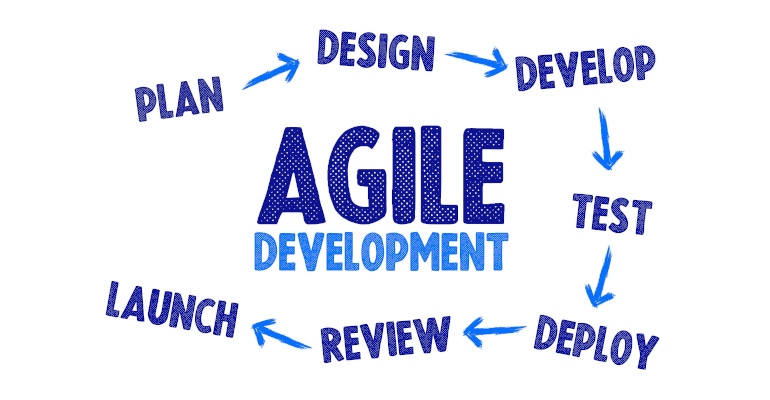DevOps & Automation: The Keys to Improving the Software Development Workforce
Here's why an agile DevOps environment for software development benefits the enterprise and the workforce.

The demand for software engineering talent has never been stronger in the tech industry. As the world economy continues to shift toward services and applications, all industries are facing the crunch when it comes to rapidly delivering new tools and capabilities to an insatiable and steadily expanding user base.
This means businesses of all sizes need to gain every competitive edge they can in the hunt for new development skills. That doesn’t just mean a focus on salaries and benefits; it entails providing the kind of work environments that reward exceptionalism and enable a high level of professional satisfaction and personal fulfillment.
Software Development Jobs Boom
According to the U.S. Bureau of Labor Statistics, the number of jobs in software development and engineering is expected to increase by 22% over the next decade—nearly three times the overall jobs growth rate. This represents nearly 190,000 software and engineering openings per year, many of them needed to refill jobs lost to attrition, retirement, and other factors.
Still, many organizations are finding it difficult to hire and retain qualified developers. A recent survey by CodinGame and CoderPad found nearly half of recruiters identified a lack of suitable candidates as their top challenge. Identifying potential candidates, even if they lack certain skill sets, has jumped from the number eighth concern to the second. And this is despite the fact that, according to another survey by Stack Overflow, 75% of developers are either actively looking for a new job or are at least open to new opportunities.
To find and retain the best people, organizations must zero in on and address the top causes of job dissatisfaction within the development community. While salaries do figure highly in this equation, they are not the only factor. Equally important are all the difficulties inherent in the process of delivering good code, which ranges from rework and changes to completed jobs, as well as unplanned work and unanticipated problems.
Further, there are organizational issues, such as lack of direction from higher ups, inadequate technical knowledge, and a lack of proper tooling. Additionally, the disconnect between development and testing that exists at many organizations leads to frustration. A recent GitLab survey found testing was far and away the top cause of delays in the release process.
To address these issues, the enterprise needs to embrace agile frameworks built around DevOps and automation. By showing prospective hires that they are “best in class” in their approach to development and agile programming, organizations demonstrate that they are on the cutting edge of their respective fields and provide a forward-leaning work environment that values both the final product and the workers who create it.
Agile Improvement
Agile development has already shown how it can alleviate the issues that developers find most frustrating. For one thing, agile provides a structure and methodology that resolves the problems of unclear directions and unrealistic deadlines. When applied correctly, it can establish clear, attainable goals that typically can be achieved within one or two weeks.
As for testing, automation has the ability to catch bugs early in the development process when they can be repaired most easily. This allows organizations to adopt a “shift-left” testing strategy so that it becomes an integrated element of the development process, not a separate, disruptive process unto itself.
Ultimately, automation’s ability to assume much of the grunt work in the DevOps process frees up developers’ time to do what they do best—create new tools and functions—rather than combing through lines of code looking for bugs. Likewise, they can devote more time to training, certification, and other forms of personal and professional development, enhancing the quality of their work and raising their value to the enterprise. And with fewer last-minute crises to attend to, developers can enjoy a better work-life balance, which numerous studies have shown boosts productivity in the workplace.
No matter how intelligent or automated the enterprise becomes, the workforce will remain the critical asset to any business model. An agile environment that incorporates automated testing allows technology to enhance the value of human activity to a significant degree, which in development circles means less time doing low-level repairs, fewer delays that produce cost overruns, and avoiding long days and late nights for development teams.
Improved Work Environment
A more-streamlined work environment leads to better job satisfaction, increased opportunities for upskilling and advancement, and greater flexibility to allow employees to pursue the things that interest them, not just what is necessary to earn a paycheck.
Any digital organization, regardless of size or industry, should be moving toward an agile DevOps environment at this point. In true win-win fashion, it helps the enterprise and the workforce become better at what they do. That’s exactly the kind of environment where a developer is more likely to stay and a recruit is more likely to join: plenty of time to do meaningful work, opportunities to advance their skills, and chances to make a true and lasting impact on business success.
About the Author(s)
You May Also Like



.jpg?width=300&auto=webp&quality=80&disable=upscale)

